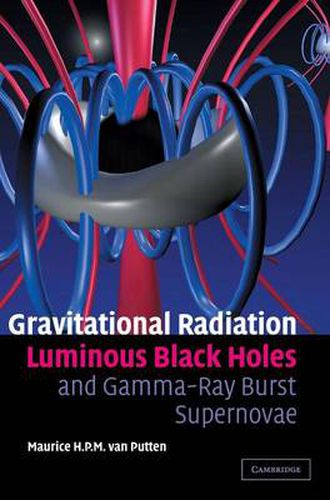Readings Newsletter
Become a Readings Member to make your shopping experience even easier.
Sign in or sign up for free!
You’re not far away from qualifying for FREE standard shipping within Australia
You’ve qualified for FREE standard shipping within Australia
The cart is loading…






Black holes and gravitational radiation are two of the most dramatic predictions of general relativity. The quest for rotating black holes - discovered by Roy P. Kerr as exact solutions to the Einstein equations - is one of the most exciting challenges currently facing physicists and astronomers. Gravitational Radiation, Luminous Black Holes and Gamma-Ray Burst Supernovae takes the reader through the theory of gravitational radiation and rotating black holes, and the phenomenology of GRB-supernovae. Topics covered include Kerr black holes and the frame-dragging of spacetime, luminous black holes, compact tori around black holes, and black-hole spin interactions. It concludes with a discussion of prospects for gravitational-wave detections of a long-duration burst in gravitational-waves as a method of choice for identifying Kerr black holes in the Universe. This book is ideal for a special topics graduate course on gravitational-wave astronomy and as an introduction to those interested in this contemporary development in physics.
$9.00 standard shipping within Australia
FREE standard shipping within Australia for orders over $100.00
Express & International shipping calculated at checkout
Black holes and gravitational radiation are two of the most dramatic predictions of general relativity. The quest for rotating black holes - discovered by Roy P. Kerr as exact solutions to the Einstein equations - is one of the most exciting challenges currently facing physicists and astronomers. Gravitational Radiation, Luminous Black Holes and Gamma-Ray Burst Supernovae takes the reader through the theory of gravitational radiation and rotating black holes, and the phenomenology of GRB-supernovae. Topics covered include Kerr black holes and the frame-dragging of spacetime, luminous black holes, compact tori around black holes, and black-hole spin interactions. It concludes with a discussion of prospects for gravitational-wave detections of a long-duration burst in gravitational-waves as a method of choice for identifying Kerr black holes in the Universe. This book is ideal for a special topics graduate course on gravitational-wave astronomy and as an introduction to those interested in this contemporary development in physics.